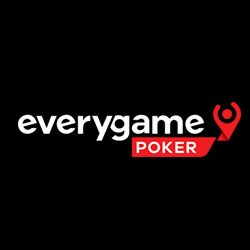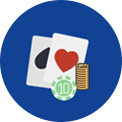Combination of five cards with each of value equal to or less than 8 contributes towards forming a 5-Card Low Hand. In layman’s language; any of A, 2, 3, 4, 5, 6, 7, 8 forms the Low Hand, wherein A is taken as of value 1. Following is the list of some of the Low Hands, from best to worst:
Five High
A set of five cards with 5 as the highest value forms the Five High Low Hand. Since none of the cards in Low Hands can be paired, the best possible Low Hand is a combination of 5, 4, 3, 2 and A regardless of suits.
Six High
A set of five cards with 6 as the highest value forms the Low Hand called as Six High. In case where high cards of two sets of Low Hand are matching, next two high cards should be compared and so on.
![six-high-player]()
Player 01
![six-high-player]()
Player 02 Wins
For example, Player 1 forms a Six High Low Hand with a card combination of 6, 5, 4, 3, 2 whereas Player 2 forms a Six High Low Hand with cards 6, 4, 3, 2, A. Since the highest value card in both the sets is 6, the next highest card is compared. Player 2 has the stronger Low Hand with 4 as the second highest card in comparison to Player 1, who has 5 as the second highest card.
![seven-high-player]()
Player 01 Wins
![seven-high-player]()
Player 02
Seven High
A set of five cards with 7 as the highest value forms the Low Hand called as Seven High. In case where high cards of two sets of Low Hand are coinciding, next two high cards should be compared and so on.
For example, Player 1 forms a Seven High Low Hand with a card combination of 7, 5, 4, 3, 2 whereas Player 2 forms a Seven High Low Hand with cards 7, 6, 5, 2, A. Since the highest value card in both the sets is 7, the next highest card is compared. Player 1 has the stronger Low Hand with 5 as the second highest card in comparison to Player 2, who has 6 as the second highest card.
Eight High
A set of five cards with 8 as the highest value forms the Low Hand called as Eight High. In case where high cards of two sets of Low Hand are same, next two high cards should be compared and so on.
For example, Player 1 forms a Eight High Low Hand with a card combination of 8, 7, 6, 5, 4 whereas Player 2 forms a Eight High Low Hand with cards 8, 7, 6, 5, 3. Since the highest value card in both the sets is 7, the next highest card is compared. Even the next three highest cards are of same values, i.e., 7, 6 and 5; so we compare the next and the last card. Player 2 has the stronger Low Hand with 3 as the highest card in comparison to Player 1, who has 4 as the highest card.
The second most popular Poker variant, Omaha can be played with a minimum of two players and a maximum of ten players. A 52-Card deck without joker is used to play this game. Each player is dealt with four Hole Cards, face down. In the next three betting rounds, a total of 5 Community Cards are dealt, face up. All that a player needs to do is form the best 5-Card Poker Hand using two Hole and three Community Cards.
Omaha Poker Game Rules
Omaha is a variant of Poker, which demands forming the best 5-Card Poker hand using two of the four Hole cards and three of the five Community cards. Every player is dealt with four Hole cards in the first betting round and a total of 5 Community cards are dealt in the remaining three betting rounds.
Let’s gander over on how the rules of Omaha looks like:
The Dealer Button
The button placed on Omaha table determines the position of the dealer. The first player seated at the table gets the dealer button and the button keeps on moving in the clockwise direction after completion of every round.
This dealer button often dictates who the first players are to begin the betting round with the Small Blind and Big Blind bets. The two players sitting to the left of the dealer button place forced bets aka the blinds. The first player to the left places the Small Blind Bet and the player next to this player is bound to place the Big Blind Bet.
Forced Bets: The Blinds
The blinds, also known as forced bets come in two forms: The Small Blind Bet and the Big Blind Bet. The Small Blind Bet is equivalent to half of the full betting amount for the round and the Big Blind Bet is equivalent to the full betting amount for the round.
Before beginning every round, two players at the table are bound to place these forced bets Without these forced bets, the game of Omaha would be very boring as no one would contribute towards the money into the pot.
Four Round of Betting in Omaha
Following are the four rounds of betting in Omaha:
Round 1: Pre Flop Round
Pre Flop Round is the first round of betting in Omaha, in which each player has only four Hole cards, dealt face down. The player sitting left to the Big Blind begins the round, and this player has the following three options:
- Call: wagers the same amount as the Big Blind Bet
- Raise: increases the bet amount within the specified limits
- Fold: packs away both the Hole cards
On choosing ‘Fold’ option, the player no longer qualifies to win the current hand.
Round 2: Flop Round
The second betting round is known as the Flop Round, in which three community cards are dealt on the table marking the beginning of a new round. In this round, the players try to couple their two Hole cards with three community cards in order to form the best 5-Card Poker hand. The player sitting left to the button is the first active player for this round, and has an option to Check along with Call, Raise and Fold.
A Check simply means calling the current bet of zero, i.e., to pass the action to the next player in the hand by betting zero amount. Players often confuse between Check and Fold. Well, Check does not lead to packing away of cards. Rather, it renders an option to wait to raise/call in the later betting rounds.
Round 3: Turn Round
The third betting round is known as the Turn Round, in which the fourth community card is dealt marking the beginning of another betting round. This round is similar to the Flop Round and offers 4 betting options to the players: Check, Call, Raise or Fold.
Round 4: River Round
Similar to Texas Hold’em, River Round is the fourth betting round followed by the final Showdown in Omaha Poker. The fifth and the final community card is dealt in this round. Even this final round of betting offers 4 betting options, which are Check, Call, Raise or Fold.
Showdown
The final Showdown takes place after all the four rounds of betting are completed. In this, the remaining players expose their Hole Cards and with the dealer’s assistance the winning hand is determined. The player with the best 5-Card Poker hand wins the pot.


























